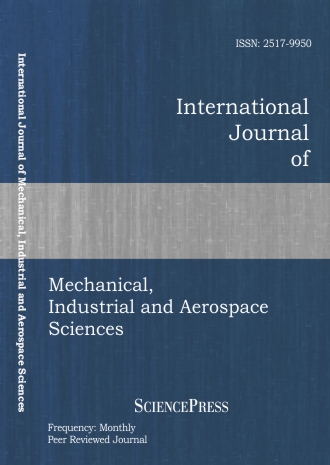
Scholarly
Volume:5, Issue: 1, 2011 Page No: 80 - 86
International Journal of Mechanical, Industrial and Aerospace Sciences
ISSN: 2517-9950
2577 Downloads
Power Generation Potential of Dynamic Architecture
The main aim of this work is to establish the capabilities of new green buildings to ascertain off-grid electricity generation based on the integration of wind turbines in the conceptual model of a rotating tower [2] in Dubai. An in depth performance analysis of the WinWind 3.0MW [3] wind turbine is performed. Data based on the Dubai Meteorological Services is collected and analyzed in conjunction with the performance analysis of this wind turbine. The mathematical model is compared with Computational Fluid Dynamics (CFD) results based on a conceptual rotating tower design model. The comparison results are further validated and verified for accuracy by conducting experiments on a scaled prototype of the tower design. The study concluded that integrating wind turbines inside a rotating tower can generate enough electricity to meet the required power consumption of the building, which equates to a wind farm containing 9 horizontal axis wind turbines located at an approximate area of 3,237,485 m2 [14].
References:
[1] M. Asif, T. Muneer, R. Kelley, "Life cycle assessment: a case study of a